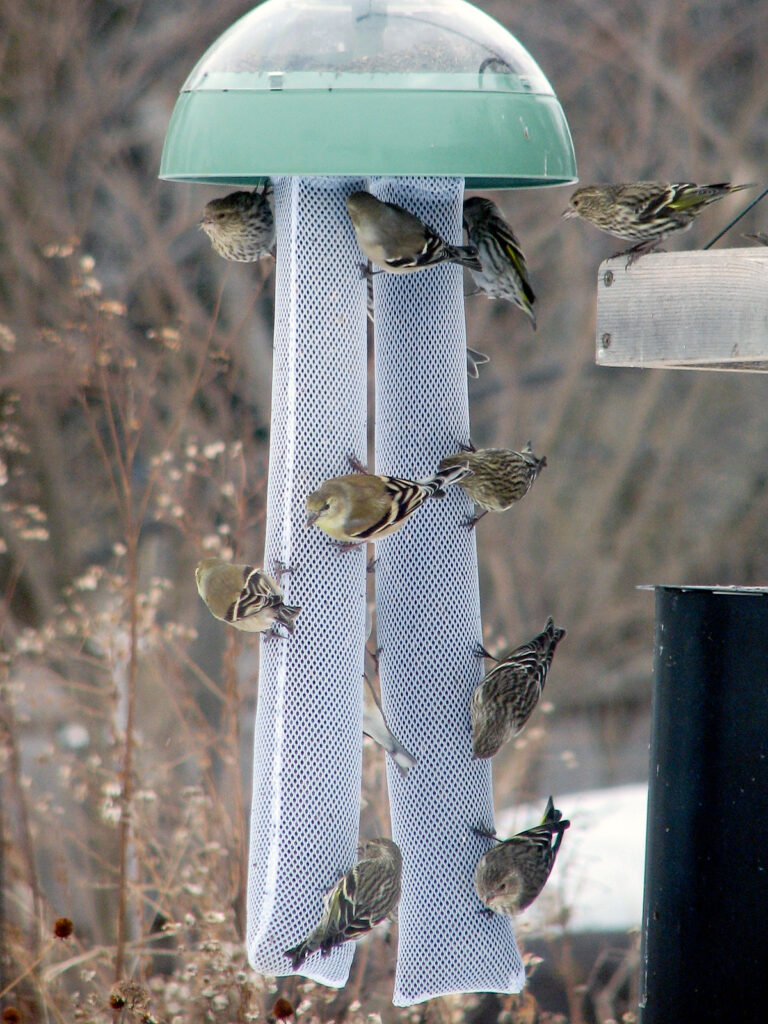
People usually think of buying bags of bird seed when they think of feeding birds.
But some birds don’t even eat seeds and some don’t come to feeders. We do have bird feeders, but we try to provide seeds in more natural ways, too.
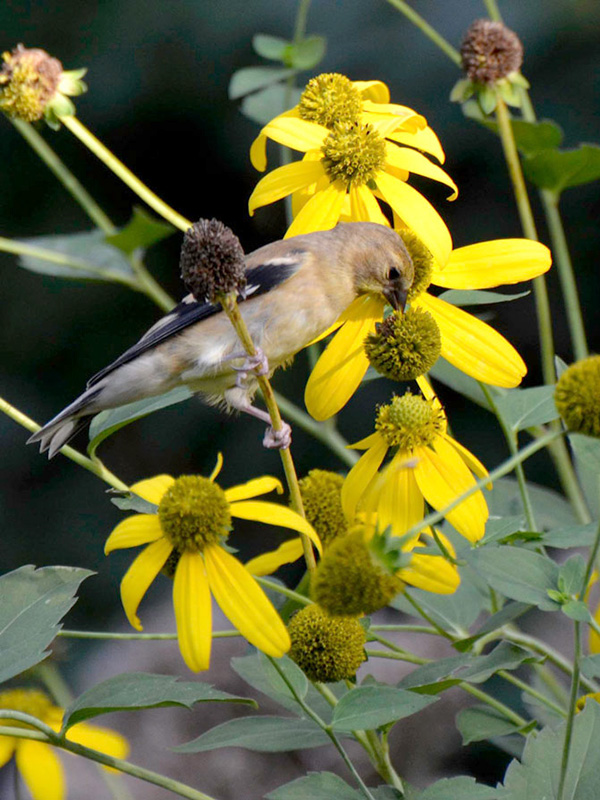
This goldfinch is eating one of its favorite seeds: greenhead coneflower (Rudbeckia laciniata).
An advantage of not relying solely on bird feeders is that food for birds is distributed throughout the yard.
This cuts down on disease transmission from bird to bird, moldy seed under feeders, and the gathering of birds in one spot as a cat (or hawk) café. (And see the Resource section below on Salmonella…)
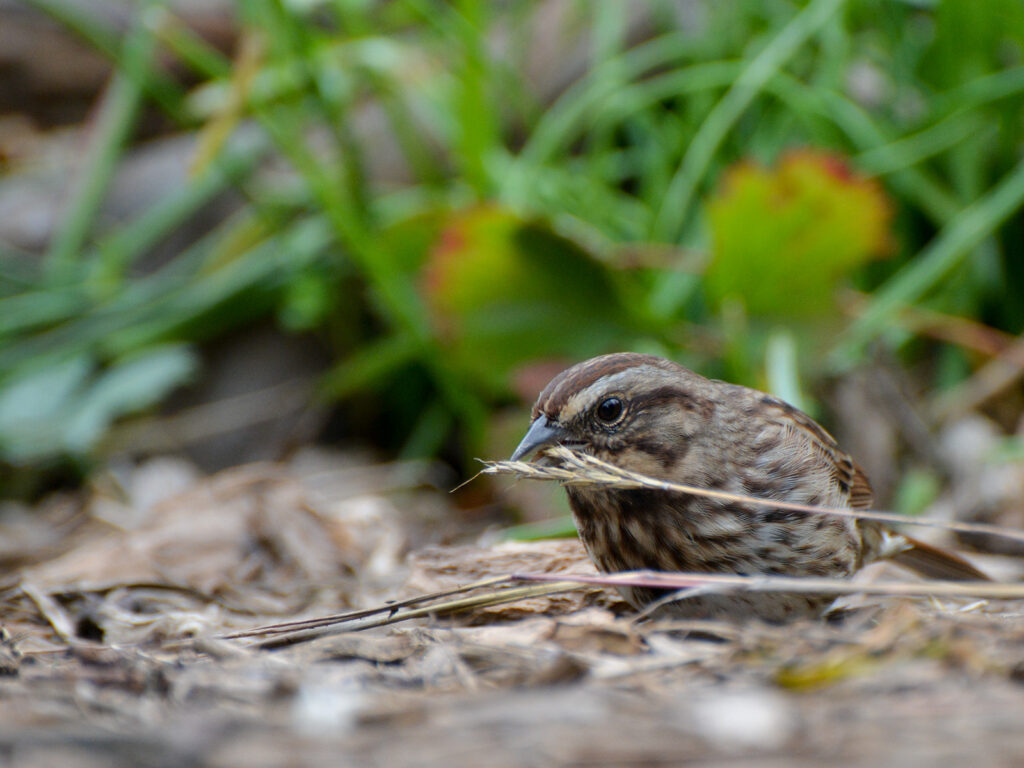
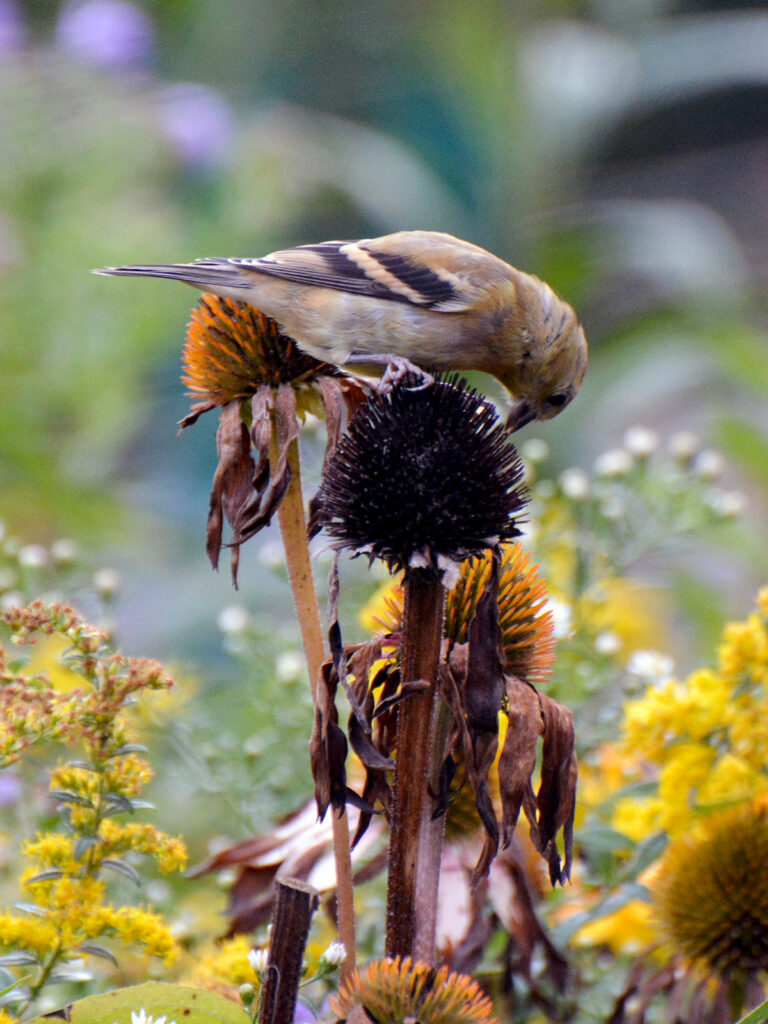
Grasses are an obvious source of seeds, but I leave other plants besides grasses standing, too, such as these spent coneflowers.
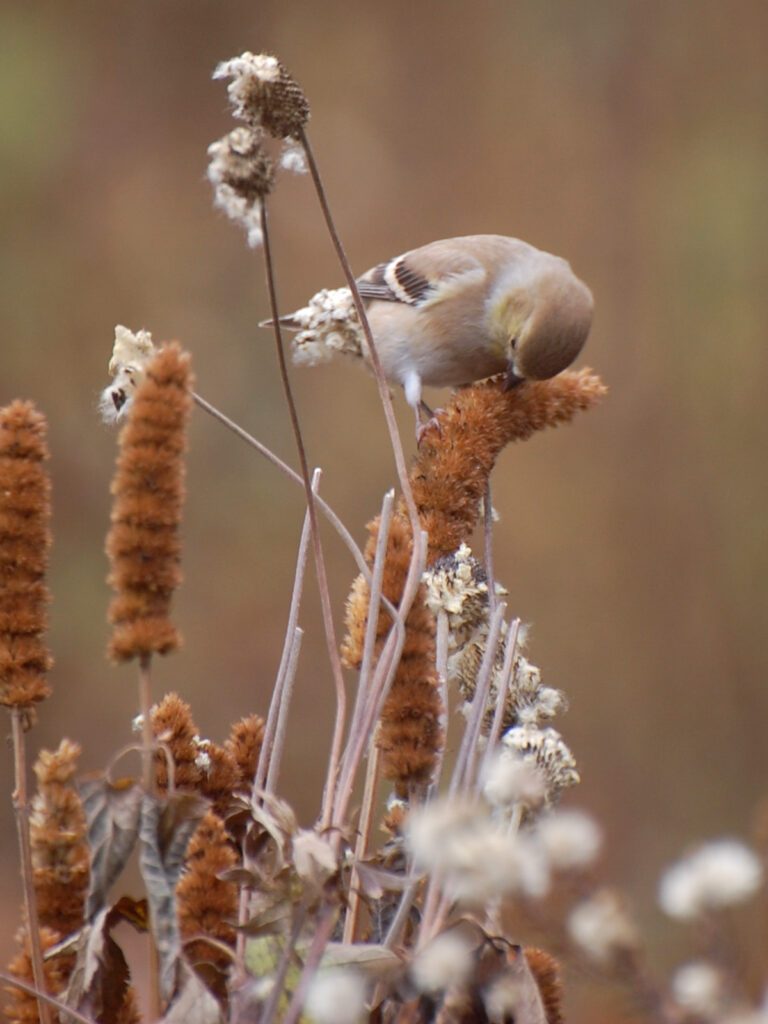
One of their favorites is anise hyssop (Agastache foeniculum).
I’ve seen goldfinches and juncos enjoying these seeds, and I’m sure other birds eat them, too.
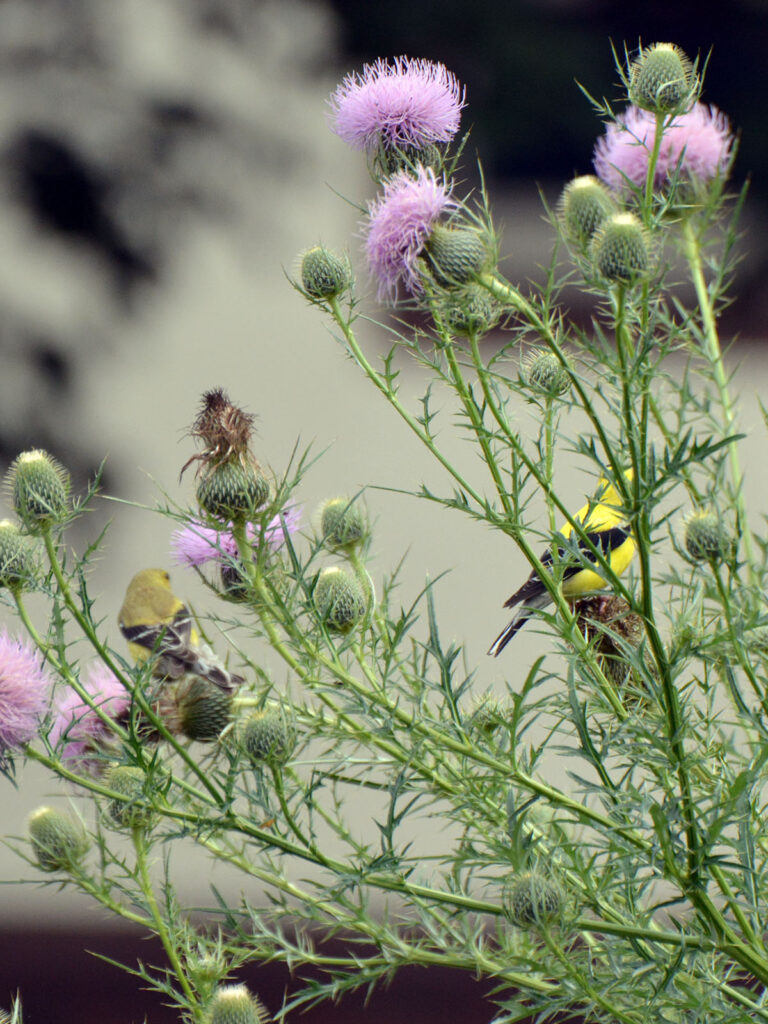
What do people buy for goldfinches? Bags or socks of thistle seed! But there’s a native plant alternative.
I never would have thought I’d deliberatively plant a thistle, but I’m enjoying seeing birds (and bees and butterflies) getting its nectar and seeds.
Of course this is a native thistle (Cirsium discolor), as recommended by the Xerces Society. This is a biennial, so I hope it spreads some of its seeds around and establishes a patch.
Sparrows, such as this white-throated sparrow, find seeds on the ground that fall from plants.
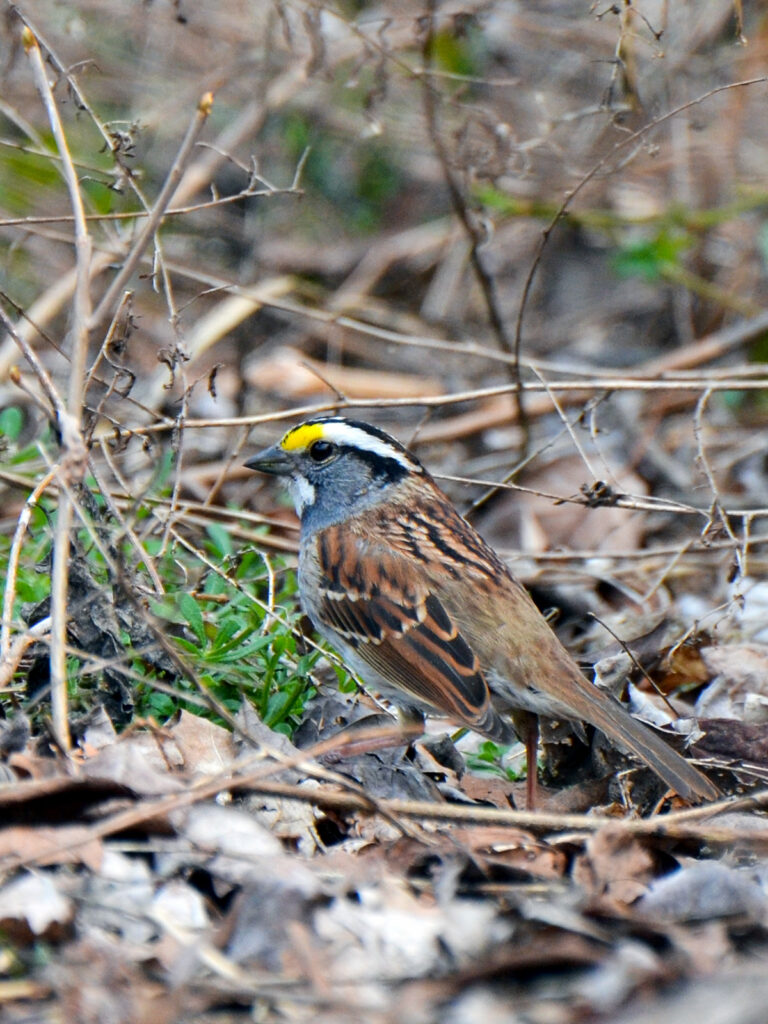
Here are some more pictures of birds eating seeds from our plants.
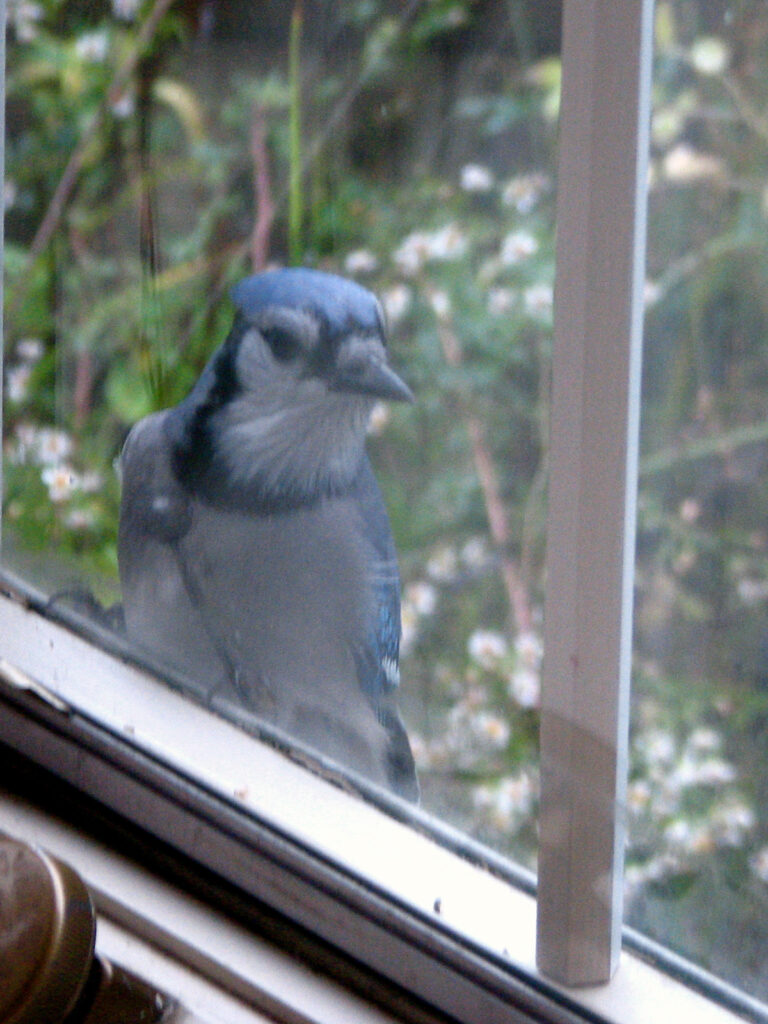
We planted an oak tree, but it doesn’t produce acorns yet, and we don’t have any other nut trees. We do put peanuts out for the blue jay in the winter. (He’s getting impatient in this photo — he knows there are peanuts somewhere in the house!)
I don’t feed the blue jays in the summer, though, because other birds raising babies are upset when blue jays are around. It doesn’t take long for the jays to start coming around for peanuts again in the winter.
Resources
- Hilton Pond:
- Bird feeders and disease – good ideas for preventing disease
- Thoughts about bird feeders and disease – Interesting observations about bird feeders, especially when there is diseases spreading
- American Bird Conservancy:
- Cornell Lab of Ornithology:
- Audubon:
- Selecting seeds
- Bird Feeding Basics – info on choosing a feeder, location, maintenance etc.
- Bird Watcher’s General Store:
- The Nature Conservancy:
Reflections
The branches of trees in winter that look so bare are actually overwintering sites for caterpillars that sustain insectivorous birds like kinglets and brown creepers, as well as nuthatches, chickadees, titmice, and several woodpecker species that supplement a seed-heavy diet with insects.
In fact, 50% of the diet of the chickadees that I had always assumed ere entirely granivorous during the winter is insects! This is a cautionary note for us bird lovers: simply keeping our feeders filled with sunflowers seeds during the winter is not sufficient to sustain even our most common birds. We also have to plant the tree species that support the caterpillar stages of the moths that seed-eating winter birds depend on all winter long. As we shall see, oaks do this better than any other tree genus in most U.S. counties.
~ Doug Tallamy, The Nature of Oaks
